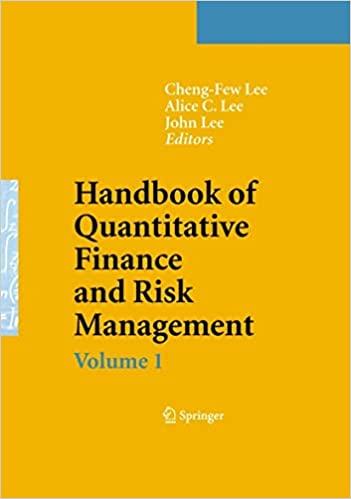
Problem 5: George works as a financial advisor in Wall Street. He typically invests in a collection of 50 equities drawn from several different industries. During a meeting with his clients, one client told him the following: "I trust your stock-picking ability and I would like to hear some advice on how I should invest my money in your five best ideas. Why invest in 50 companies when you obviously have strong opinions on a few of them?". George plans to respont to his client within the context of modern portfolio theory A. Contrast the concepts of systematic risk and firm-specific risk, and give an example of each type of risk B. Critique the client's suggestion. Discuss how both systematic and firm-specific risk change as the number of securities in a portfolio increases Problem 6: An investor is considering investing in three mutual funds. The first is a stock fund, the second is a long-term government and corporate bond fund, and the third is a T-bill money market fund that yields a risk-free rate of 2 percent. Returns on the stock fund and the bond fund are uncorrelated and the following characteristics Description Expected Return Standard deviation Stock fund Bond fund 15% 30% 10% Solve the following exercises in the order you think appropriate, but please make sure you A: When picking the optimal risky-portfolio, how much will the investor invest in each of B: What is the expected value, standard deviation and the Sharpe ratio of the optimal answer all of them. the risky mutual funds? risky portfolio? C: If the investor has a standard utility function over returns and has a risk aversion coefficient of 2, how much will the investor invest in the risk-free mutual fund? D: What is the expected value, standard deviation and the Sharpe ratio of the optimal ortfolio? Problem 5: George works as a financial advisor in Wall Street. He typically invests in a collection of 50 equities drawn from several different industries. During a meeting with his clients, one client told him the following: "I trust your stock-picking ability and I would like to hear some advice on how I should invest my money in your five best ideas. Why invest in 50 companies when you obviously have strong opinions on a few of them?". George plans to respont to his client within the context of modern portfolio theory A. Contrast the concepts of systematic risk and firm-specific risk, and give an example of each type of risk B. Critique the client's suggestion. Discuss how both systematic and firm-specific risk change as the number of securities in a portfolio increases Problem 6: An investor is considering investing in three mutual funds. The first is a stock fund, the second is a long-term government and corporate bond fund, and the third is a T-bill money market fund that yields a risk-free rate of 2 percent. Returns on the stock fund and the bond fund are uncorrelated and the following characteristics Description Expected Return Standard deviation Stock fund Bond fund 15% 30% 10% Solve the following exercises in the order you think appropriate, but please make sure you A: When picking the optimal risky-portfolio, how much will the investor invest in each of B: What is the expected value, standard deviation and the Sharpe ratio of the optimal answer all of them. the risky mutual funds? risky portfolio? C: If the investor has a standard utility function over returns and has a risk aversion coefficient of 2, how much will the investor invest in the risk-free mutual fund? D: What is the expected value, standard deviation and the Sharpe ratio of the optimal ortfolio







